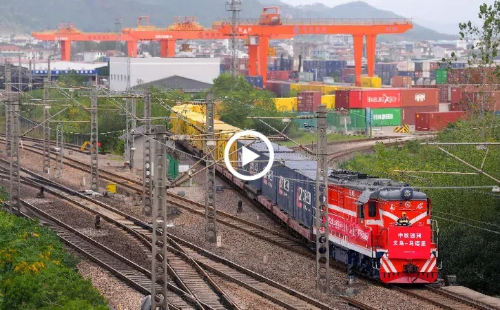CAFTA upgrade to boost cooperation
The implementation of the China-ASEAN Free Trade Area 3.0 will foster a more inclusive and sustainable regional economy, bolstering supply chain connectivity and resilience between China and the member states of the Association of Southeast Asian Nations, government officials and business executives said on Friday.
China and ASEAN announced the substantial conclusion of CAFTA 3.0 upgrade negotiations and issued a joint statement in Vientiane, Laos, on Thursday.
The statement covers existing areas of the China-ASEAN FTA agreement as well as emerging areas that have great cooperation potential, including the digital economy, the green economy and supply chain interconnectivity, said the Ministry of Commerce in an online statement on the same day.
Chen Zhiyang, deputy director of the ministry's department of international trade and economic affairs, said the future implementation of this upgraded free trade deal will boost confidence in regional economic growth and serve as a significant driver for free trade and multilateral cooperation, amid challenges posed by global geopolitics and competition.
Sharing similar views, Liu Enzhuan, a professor specializing in regional economic growth at Tianjin University of Finance and Economics, said that CAFTA 3.0 will involve cooperation in technology and education, helping ASEAN countries improve their industrial capacities, develop their digital economies and stimulate innovation.
Both China and ASEAN confirmed that they will expedite legal reviews and domestic procedures to facilitate the signing of the 3.0 upgrade protocol in 2025, said the Ministry of Commerce.
Boosted by factors such as Belt and Road cooperation, intermediate goods trade and consumption upgrades on both sides, China has remained ASEAN's largest trading partner for 15 consecutive years, while ASEAN has been China's largest trading partner for four consecutive years, according to the ministry.
China-ASEAN trade amounted to 4.5 trillion yuan ($636 billion) in the first eight months of 2024, surging 10 percent and accounting for 15.7 percent of China's total foreign trade value, statistics from the General Administration of Customs showed.
Ng Chee Keong, vice-president of North-East, Central and Southeast Asia of CrimsonLogic Pte Ltd, a Singapore-based digital trade solutions provider, said that as Chinese companies accelerate their expansion into overseas markets, the ASEAN region, with its proximity, cultural similarities and complementary resources, has naturally emerged as a new focal point for Chinese businesses' global strategies.
They are demonstrating their robust capabilities across Southeast Asia in various areas, including technology, product innovation and brand development, said Ng, who is also the company's general manager for China.
"Their global expansion not only speeds up regional economic integration, but also brings fresh vitality and optimism to global economic cooperation," he said.
Viewing the ASEAN markets as crucial to its global business strategy, Chinese electric vehicle maker Avatr entered the Thai market in September, joining a long list of Chinese automakers exploring that country. "We aim to establish Thailand as a strategic market for our business growth in Southeast Asia," said Chen Zhuo, the company's president.
In 2023, nearly 80 percent of China's outbound direct investment flowed into Asia, a 13.9 percent increase compared with the previous year. Of this, Chinese companies' investment in ASEAN reached $25.12 billion, an increase of 34.7 percent on a yearly basis, according to data from the Ministry of Commerce.





 play
play